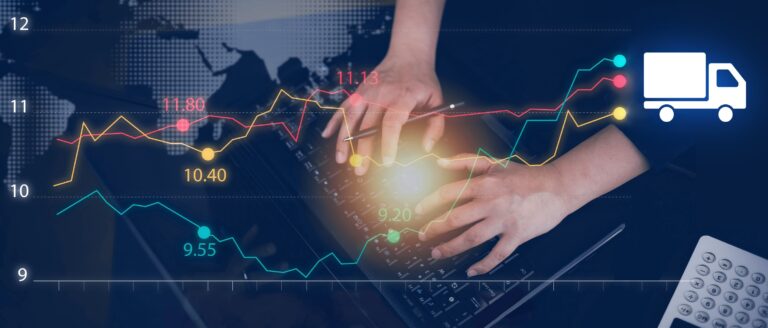Using historical data and analytical methods like machine learning, and predictive analysis can help your business forecast potential outcomes. In order to foresee potential outcomes, predictive analysis utilizes cutting-edge statistical tools and software in tandem with AI. Furthermore, the goal of predictive analysis is to make predictions about the future by looking at the past. Typically, historical data is used to construct mathematical models that capture essential patterns. Afterward, the model is applied to new information in order to make predictions about future events or suggest courses of action likely to provide desirable results. Because of advancements in enabling technology, especially in the fields of big data and machine learning, predictive analysis has received a lot of attention in recent years. Read on to see and understand the predictive analysis examples and their importance in this piece.
What is Predictive Analysis?
Predictive analysis is the method of making speculations about what might happen in the future relying on data from the past and the present. Researchers can make predictions about what might happen in the future by looking at what’s happening now and what’s happened in the past and then using statistical analysis techniques on the data.
Also, predictive analysis is used in a wide range of business settings, such as experience management programs, to predict how actions in the future might affect a business. Predictive analysis can help companies make decisions by “seeing” the outcomes of their actions.
Predictive analysis isn’t perfect, but it can help a lot. Even though the predictions aren’t always right, it’s still a better way to guess than to just guess blindly.
The Knowledge of Predictive Analytics
Predictive analysis is a type of technology used to speculate on the outcomes of future events. AI, data mining, machine learning, modeling, and statistics are just a few of the many methods used to get these results.
Data mining, for instance, uses this method to examine copious amounts of information for hidden connections and trends. The only difference is that text analysis is used for much longer passages of text.
Furthermore, weather forecasting, game design, voice-to-text translation, customer service, and even investment portfolio methods are just some of the many fields that benefit from predictive models. Descriptive statistical models are used in all of these programs to predict new data.
Also, businesses can benefit from predictive analytics in a number of ways, including improved inventory management, better strategy creation for marketing campaigns, and more accurate projections of future revenue.
It’s crucial for the success of firms, especially in the healthcare and retail sectors, where competition is fierce. In order to construct safe investment portfolios, investors and financial experts might consult this technology.
Relationships, patterns, and structures in data are identified using these models, allowing for inferences to be drawn about the effects of altering the procedures used to obtain the data. Predictive analysis expands upon such descriptive tools by examining historical data to foretell the probability of a certain set of future outcomes given the current state of affairs or a specified future scenario.
What Are the Three Types of Predictive Analysis?
Predictive analysis is a method that attempts to foretell the future by drawing conclusions from the present and past. Classification, clustering, and time series models are frequently used in predictive analytics. Read more about each of these below.
#1. Decision Trees
Decision trees are a type of categorization model that uses a set of criteria to assign data to one of several possible buckets. This technique shines when applied to the study of human choice. The model is a tree with each branch representing a choice and each leaf signifying the outcome. When a dataset has multiple missing variables, decision trees are effective and simple to use.
#2. Neural Networks
Neural networks are a type of machine learning that can model exceedingly complicated interactions, making them valuable in predictive analysis. These are essentially extremely robust pattern recognition engines. Neural networks are best for finding nonlinear relationships in datasets if no mathematical method exists. Validating the outcomes of decision trees and regression models with neural networks is possible.
#3. Regression
Most statistical work is done with this paradigm. It’s useful for spotting trends in large datasets where the inputs have a linear relationship with one another. Deducing an equation that represents the relationship between each input in the dataset makes this technique effective. Regression analysis can be used, for instance, to learn how changes in security price and other important factors affect returns.
What Are the 4 Steps in Predictive Analytics?
Big buzzwords like machine learning, big data, artificial intelligence, and similar concepts come to mind when we consider data trends. Yet, data’s primary purpose is to facilitate better decision-making.
What good are tools like big data and prediction algorithms if they don’t help businesses make better, more informed choices? But, it is not just having access to data that is important; rather, it is how that data is analyzed that allows you to make better judgments. Here are the 4 steps in predictive analysis.
#1. Provide a Reason for the Prediction
Knowing who is participating and why is the first order of business. An item-level forecast for operational planning may be generated on a monthly basis as part of a routine demand planning cycle, or it may be requested on an as-needed basis in order to assess the viability of a new product launch. Knowing the internal customer, evaluating the demand, and figuring out the necessary data are prerequisites for every study. When you have that information, you can make an accurate prediction and analysis.
Then, you calculate the time, effort, and profit from such an in-depth study. This could lead to a fast or judgmental diagnosis in one case or a thorough probability analysis in another. Review criteria, such as products or customers, may be established during this stage. In this regard, conducting customer-product segmentation in advance of implementing demand planning is extremely useful.
#2. Demand Analysis
Data collection and cleaning is the next step. We need to pick the right data for the job, clean it up, build it up to gain usable information, and then integrate it all. Most of the time, this is simply a monthly update of demand history and the removal of any outliers or promotional demand. Also, it may call for the accumulation of new data sets to supplement or replace the existing ones. Whether you’re updating or collecting new data, you must evaluate, format, and clean it.
In addition, always keep these things in mind while you gather and sort your data:
- Create a visual representation of your data whenever it’s practical to do so.
- Take notes using the same terminology as the forecast.
- First, you should check to see if any relevant data already exists in databases or other readily available sources.
- Keep a log of every piece of information gathered, including the time and date, and any notes that seem relevant.
#3. Exploratory Data Analysis
Once you have the data set together, you can begin developing your model. Understanding the characteristics of your data is a prerequisite to the proceeding. To construct an appropriate model, one must be familiar with the data’s origins, characteristics, and relationship to the target variable. To put it simply, EDA’s primary goal is data comprehension.
There may be instances of duplicating information in the data collected. To put it another way, there is a good chance that the model will generate inaccurate predictions if such data is used as input. Thus, EDA must be performed on the data to detect and eliminate all anomalies, missing values, and other distractions. Data pattern recognition facilitates model parameter selection. When using EDA, we can increase the precision of the model before it is even produced.
Numerical calculations and graphical representations of data are two staples of EDA. Calculating the Standard Deviation, Z-score, Inter-Quartile Range, Mean, Median, and Mode and recognizing data skewness helps explain dispersion. For a dataset’s overall picture, heat maps, scatter plots, bar graphs, and box plots are useful.
#4. Control Productions
If nobody sees, utilizes, or analyzes your predictive analysis and forecast, it doesn’t matter how good it is. Verify that the prediction was used as expected and enhance the technique until the prediction is as accurate as possible. The first step is developing the skills to effectively convey forecasts in the format desired by your audience. I’ve said this before, but effective demand planners are like storytellers who speak in numbers.
Furthermore, timing, utility, consistency, and formality are the hallmarks of effective communication. At the conclusion of each month, your team should do a Demand Review, which can be an independent activity or a component of your organization’s formal S&OP, FP&A, or Business Efficiency Process (BEP). You can discuss inputs, outputs, and data doubts at these conferences and evaluate the project’s success or failure.
Finally, good processes should be measured and tracked to ensure they are effective and to enhance future forecasting. Forecasting and other forms of predictive analysis should be seen as an ongoing method of development.
Predictive Analysis Examples
Improve your decision-making and build more information plans with the help of forecasting. In order to encourage you to implement predictive analysis at your own company, we have put together some examples.
#1. Cash Flow Projection in Finance
All business needs to keep financial records, and predictive analysis can help determine its long-term survival. Projecting sales, income and expenses allows you to create a picture of the future and make decisions based on historical data from prior financial statements and data from the wider industry.
Also, Financial Accounting is taught at HBS by Professor V.G. Narayanan and is required for the core program.
Narayanan argues that “managers need to be looking ahead” to ensure the company’s ongoing improvement. In addition, “There is always a tremendous deal of uncertainty involved in this process, regardless of the industry in which you operate.”
#2. Establishing Staffing Requirements for Entertainment & Hospitality
Business Analytics delves into how Caesars Entertainment, a casino and hotel operator, uses predictive analysis to staff venues optimally at peak periods.
The number of employees required at any given time in the entertainment and hospitality industries is contingent upon a number of factors, including the rate of client entry and exit. Inadequate staffing may lead to unhappy customers, uncomfortable workers, and costly errors while overstaffing wastes money.
Furthermore, a group of researchers created a multiple regression model that uses a number of variables to forecast the number of guests checking into a hotel on any given day. Caesars was able to appropriately staff its hotels and casinos without hiring too many people using this method.
#3. Behavioral Targeting in Marketing
Marketers can take advantage of a wealth of consumer information to tailor their communications to the habits and preferences of their target audience. Predictive analysis is a method of forecasting future events by analyzing patterns of behavior from the past.
In marketing, predictive analysis can be used to foresee seasonal sales fluctuations so that campaigns can be timed and targeted correctly.
Also, leads’ likelihood of converting from awareness to purchase can be predicted from their past behavior. The number of content offerings a lead interacts with, for instance, can be used in a single linear regression model to forecast the lead’s future likelihood of converting into a customer with a statistically significant level of certainty. With this information, you can create strategically timed adverts based on where the customer is in their journey.
#4. Production Quality Assurance
While the above examples of predictive analysis include responding to possible future events, this type of analysis can also be used to forestall the occurrence of disastrous or unwelcome ones. In the manufacturing industry, for instance, computers can be trained on past data to reliably forecast when certain machines would break down.
Once the algorithm detects the conditions for an impending failure, it will send a signal to a human operator, who can then halt the machine, saving the corporation thousands, if not millions, of dollars in damaged product and repair costs. The approach makes immediate, rather than distant, predictions about potential failure states.
Saving time, money, and energy is the goal of many algorithms, and some of these programs will even suggest improvements and corrections to ensure that problems don’t arise in the future. This is an application of prescriptive analysis; in practice, it is not uncommon for multiple forms of analytics to work together to find a solution.
Predictive Analysis Tools
Marketers may use predictive analysis tools or software to better understand customer behavior, predict the future, and develop strategic plans based on a wealth of information from the past.
Analysts estimate that marketing budgets average 9.5% of total company sales. The 2020 figure was 11% higher, thus this is a decrease. There is no greater pressure than ever on marketing executives to get the most out of their budgets.
The advent of predictive analysis tools and software has been a godsend for the marketing department by helping its leaders spot lucrative prospects and base strategic decisions on hard facts. We’ll take a look at the top predictive analysis tools or software that will assist you to get starting with or advancing your analytics efforts.
#1. Improvado
Marketers may use Improvado, a revenue data platform, to generate automated reports and dashboards and combine data in real-time from a variety of sources.
More than 500 data sources (including customer relationship management systems, advertising servers, and email platforms) can be mined by the platform, transformed into consumable formats, and then loaded onto a data warehouse or visualization tool of your choice.
Consolidating your marketing data allows you to see the big picture of your marketing campaign’s success, understand how leads go through the conversion funnel and make educated guesses about the likely results of your marketing efforts. However, if you want to expand the ways in which your data is put to use and boost the effectiveness of your marketing campaigns, you may take use of the company’s Professional Services.
#2. KNIME Analysis Tool
Free and open-source, KNIME is a data analytics tool that employs a “Building Blocks of Analysis” approach to integrate numerous machine learning and data mining components. If you don’t know much about coding, but want to create and run effective workflows, this is the platform for you.
With the workflow depicted as a network of nodes, each individual step can be easily monitored, isolated, and troubleshot. Also, with KNIME, users may connect to a variety of data sources, handle massive datasets, and construct machine learning models for tasks like classification, regression, dimension reduction, clustering, etc. using state-of-the-art techniques. In addition, KNIME provides graphical summaries and charts to help users fine-tune and verify their models.
There are free and premium versions of KNIME available. A server license may be required, though, if you need to run a particularly sizable query. For example, a large server that can support five users and four cores of processing will set you back a minimum of $52,000.
#3. Alteryx
To help businesses find previously hidden insights and make accurate forecasts, Alteryx provides a complete suite of automated analytics, machine learning, and data science tools.
The platform provides a centralized location for storing and sharing information gathered from many sources within a company, allowing for a more complete picture of operational metrics, more accurate forecasting, and more cohesive strategy formulation.
Finance, human resources, information technology, supply chain, marketing, and sales are just a few of the many industries that Alteryx serves.
#4. RapidMiner Studio
RapidMiner’s predictive analysis tools are built around the company’s primary competencies in data mining and text mining. Extracting data from several sources, cleansing it, and combining it into different predictive modeling procedures are all made easier by these fundamental features. All newcomers can get their feet wet with the company’s key goods, as they are available in both paid and unpaid forms. The RapidMiner Notebooks help users of all skill levels create predictive analytics models quickly and easily.
Furthermore, the business also offers supplementary tools for model creation (Auto Model) and deployment (Model Deployment), and data preparation (Turbo Prep) (Model Ops). Predictive models may now be easily shared across the company thanks to a new library of shared features. If necessary, the platform also has a number of options for explaining things and governing itself.
#5. TIBCO Statistica
The intuitive click-and-go interface of TIBCO Statistica, a data science and machine learning platform, is paving the path for the widespread use of data science. Moreover, TIBCO Statistica also puts an emphasis on usability and cooperation, as it permits numerous users to work on the same project at once and simplifies the sharing of pertinent data within a group.
This tool can process and clean up massive datasets from a wide variety of sources, and it provides a wide variety of statistical methods and an intuitive interface for quickly developing statistical and machine learning models with in-built algorithms and features. If you’re looking for a business analysis tool that prioritizes user friendliness and teamwork, TIBCO Statistica is a great choice.
Predictive Analysis Software
Predictive analysis can be quite helpful in your daily work whether you are a data analyst, engineer, or business owner. It might help your company become more productive, safer, and more responsive to consumer demands, all of which would give you a leg up on the competition. Top-tier programs for predictive analysis aid in the above tasks. Nevertheless, not everyone has the same value. Here are some of the best predictive analysis software you can try out.
#1. Anaconda
Several product editions of Anaconda are available for those keen on the company’s data science and machine learning features. The company’s primary open-source product is called Anaconda Enterprise, and it focuses on Python and R programming languages. The software is cross-platform, so you can use it on Linux, Windows, or Mac to conduct data science and machine learning. Using Anaconda, users can access over 1,500 Python and R data science packages, organize their libraries, dependencies, and environments, and do data analysis with Dask, NumPy, pandas, and Numba. After Anaconda generates results, you can use tools like Matplotlib, Bokeh, Datashader, and Holoviews to examine them.
#2. Pecan
Pecan is a digitally, low-code, artificial intelligence (AI)-driven solution for predictive analysis and data science. Business intelligence (BI) tools are made available to users in order to increase sales and improve operations. However, businesses can save money by not hiring data scientists because of how simple and straightforward it is to use. Without any coding at all, it works just as well.
Furthermore, you may adjust the product’s size with ease, and it’s quite adaptable. Because of its many advantages, it is widely adopted by organizations of all sizes and in all fields, from the medical and biological sciences to video game and e-commerce programming. Many large corporations use it, including Johnson & Johnson, SciPlay, and Phoenix.
AutoML, a data set creator, automated data preparation, modeling and enrichment, and AI-driven predictive analytics are some of the most important aspects. They allow users with little to no coding experience to generate actionable insights powered by AI. And just like the best BI apps out there, Pecan provides out-of-the-box predictive models and user-friendly dashboards.
The software works smoothly with other corporate programs. Salesforce, Google AdWords, Snowflake, Google Big Query, HubSpot, and other data and marketing platforms may all be integrated without any additional programming. At last, the Pecan may be yours with a bespoke subscription plan.
#3. Oracle Crystal Ball
To model, forecast, simulate, and optimize processes, many businesses turn to Oracle Crystal Ball, a software application. This system was designed to meet the needs of strategic planners, financial analysts, engineers, scientists, business owners, certified public accountants, marketing managers, venture capitalists, and Six Sigma experts by offering sophisticated optimization and calculation tools for a wide range of sectors. In addition, it provides users with a wealth of resources for making strategic choices that provide them an advantage over rivals. A one-time $995 licensing price per application user is available if you decide this platform is right for your business. There is a fee of $218.90 assessed by the supplier for the license and support of software upgrades.
Importance of Predictive Analytics
Several sectors use predictive analysis as a part of their decision-making processes. Here is the importance of predictive analysis:
#1. Marketing
Workers in this industry consider customers’ responses to the economy as a whole when formulating new strategies. These demographic changes can help them evaluate whether or not their current offering is likely to sell to their target market.
Meanwhile, active traders consider a number of historical indicators before making a call on whether or not to purchase or sell a security. We can predict future price changes with the use of moving averages, bands, and breakpoints by looking at the past.
#2. Spotting Conspiracies
Predictive analysis can be used in the financial sector to analyze patterns, trends, and transactions. A bank or other financial institution may look into any of these transactions that seem suspicious for possible fraud. The timing of particular transactions or the activity between different bank accounts can be examined to help with this.
#3. Human Resources
Predictive analysis is used by HR to enhance a variety of activities, such as predicting future workforce needs and skill requirements or evaluating employee data to determine causes of high turnover. Further to foreseeing diversity or inclusion activities, predictive analysis can examine an employee’s performance, talents, and preferences to predict their career progression and aid in career development planning. Also, read HR ANALYTICS: Importance, Examples, Courses, Jobs.
#4. Forecasting
In manufacturing, forecasting is crucial because it guarantees the most efficient use of supply chain resources. Accurate predictions are essential for the smooth operation of crucial parts of the supply chain, such as inventory management and the manufacturing floor.
The quality of the data utilized for these forecasts is often cleaned and optimized with the help of predictive modeling. Better forecasting is possible with the use of modeling since it allows the system to take in more data, including information from customer-facing processes.
Conclusion
While the initial steps toward using predictive analysis may seem daunting, any company with the dedication to the process and resources to get the ball rolling may succeed. Starting with a small pilot project in a crucial part of the business is a great approach to control initial investment and shorten the time it takes to see a return on that investment. Once a model is operational, it typically needs little maintenance during the years it generates useful insights.
Predictive Analysis FAQs
Where is the predictive analysis used?
Many sectors, such as banking, medicine, advertising, and retail all make use of predictive analysis. The predictive analysis employs numerous techniques, such as regression analysis, decision trees, and neural networks. Analysis with a Future Perspective Now.
What are the three types of prediction?
- Inductive
- Deductive
- Abductive
What is the objective of predictive analysis?
It predicts future events using statistical methods like machine learning algorithms and complex predictive modeling.
Similar Articles
- Predictive vs Prescriptive Analytics, Explained!!! (+ Detailed Guide)
- Predictive Analytics Tools and Software: Best 15+ Tools
- Predictive Analytics: Definition, Examples, and Benefits
- Demand Planning: Overview, Comparisons, Salaries & Jobs






